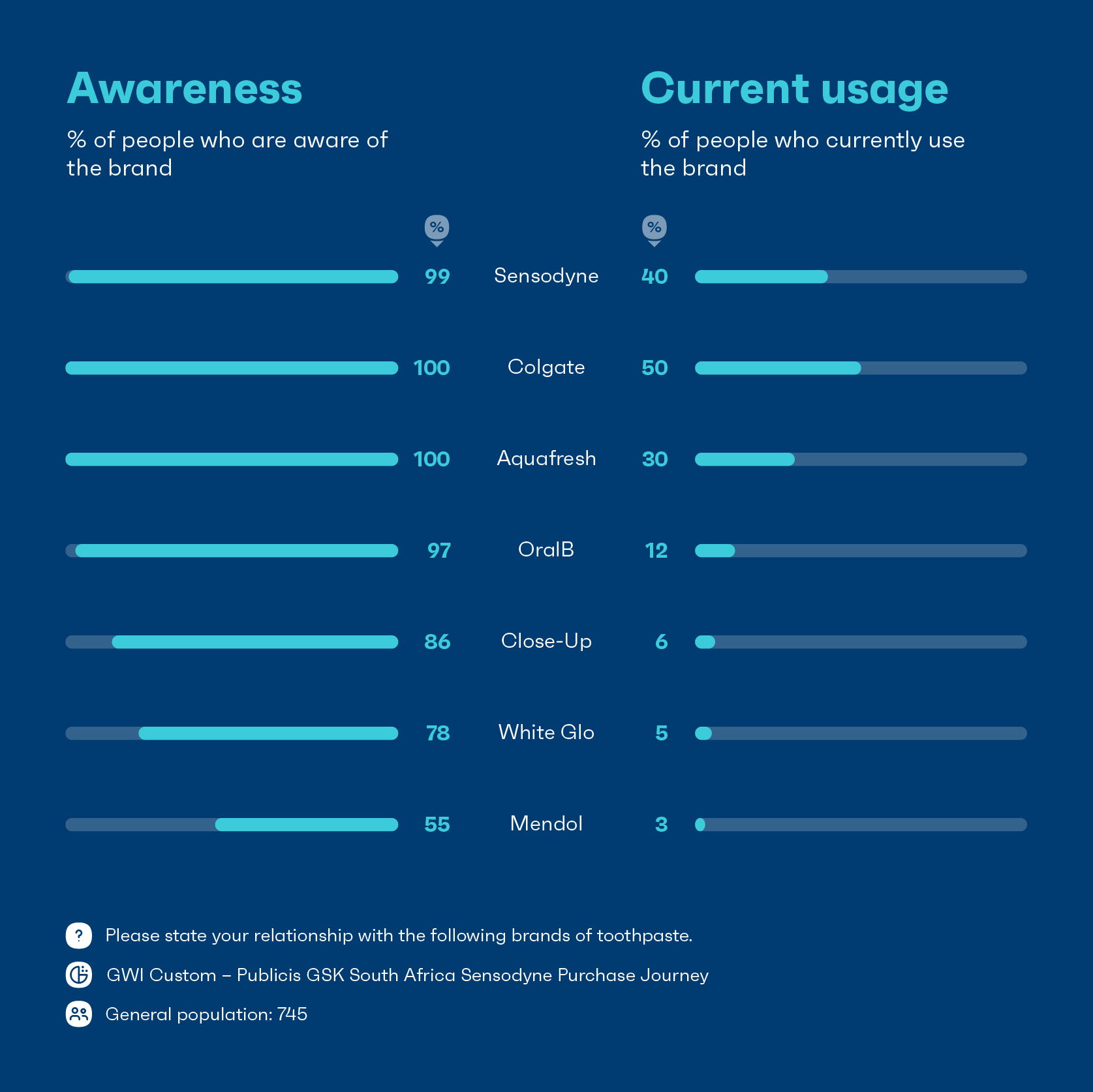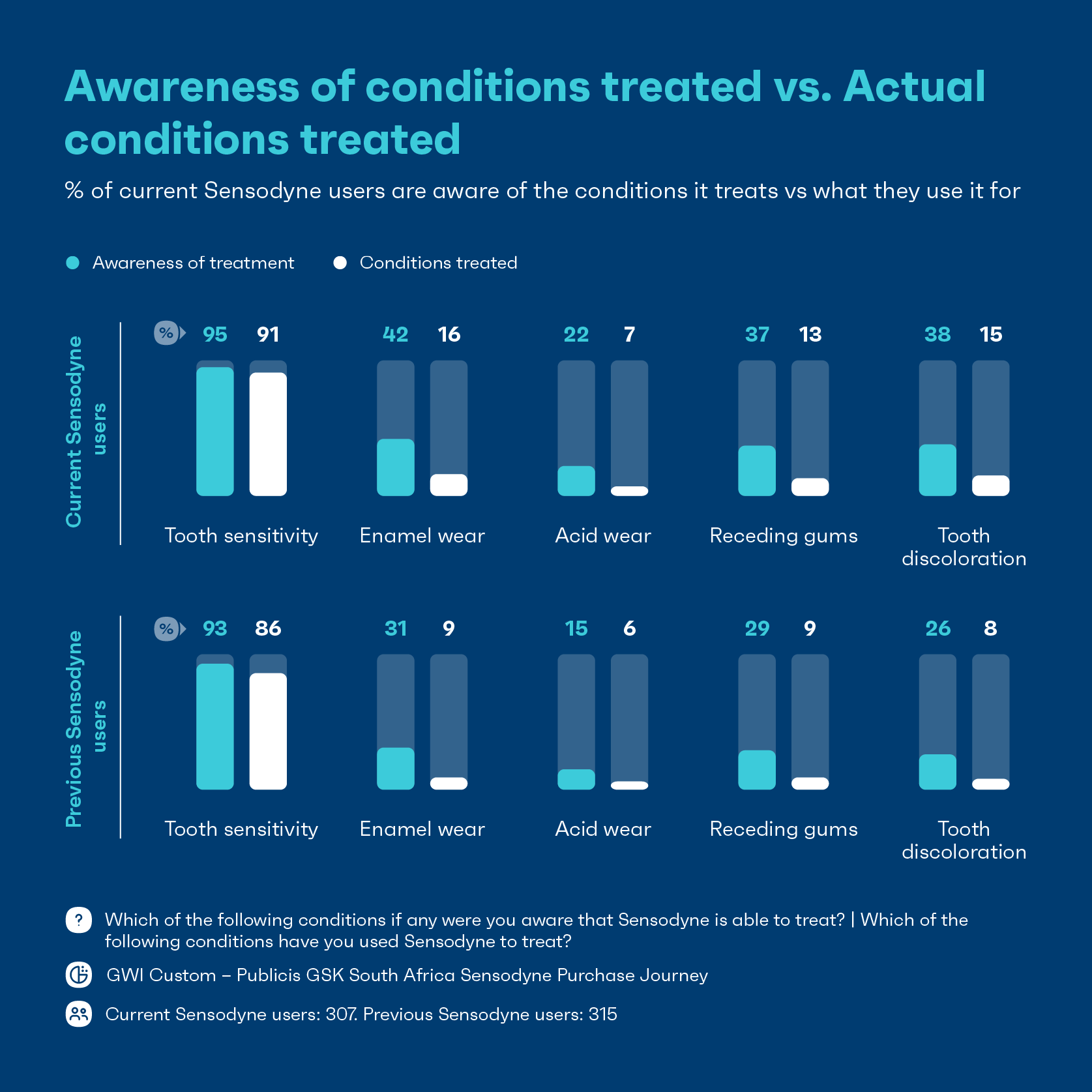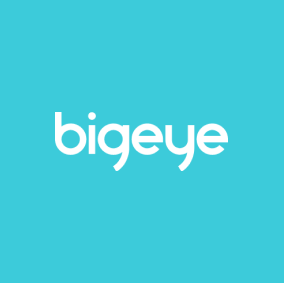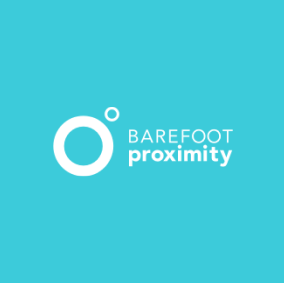Few have a history like Publicis Media – one of the oldest and largest marketing and communications companies in the world.
With a presence in over a hundred countries, Publicis is uniquely positioned to deliver transformative ideas and consumer experiences that drive growth.
Their culture of pushing the parameters of creativity and tech means clients always stand to benefit – and then some.
When Sensodyne needed help devising a campaign fit for the South African market, they turned to the Publicis team for help.
Jumping straight into research mode, they knew the insights they uncovered would tell them what to do.
The challenge
Bridging the gap between knowing and doing.
Awareness of Sensodyne’s sensitive teeth treatment range wasn’t an issue.
The next stage in the purchase journey – driving consideration and intent to buy – needed improvement.

As Ramiza Abdool, Digital Strategist at Publicis Media puts it:
“With shopping behaviors drastically affected – particularly in our market at the start of the pandemic – and with lockdown having limited our reach, it was our job to establish the changes and preferences within the decision-making process.”
“From here, we needed to design customer experiences that were relevant and effective.
That meant getting a deeper understanding of the driving factors, preferences and potential barriers within this “new” path to purchase.”
Granular insight was needed to shed light on:
- Attitudes towards teeth sensitivity products on the market.
- Perceptions of Sensodyne and the brand’s competitors.
- Consumer values and top rated attributes - such as price, sustainability and product ingredients.
- A view of the entire customer journey: from brand discovery and product research, to actually buying the product (and all the touchpoints in between).
The action
Zeroing in on current, previous, and non-Sensodyne users.
Sensodyne was focused squarely on making their audience’s purchase journey more meaningful and impactful.
This meant finding out about current, previous, and non-users, along with their key media touchpoints, casting any assumptions about them aside.
Step one: gathering the right information.
Building a custom survey with GWI consisting of forty questions, Ramiza’s team had autonomy to get as granular as they needed.
They asked about:
- Consumers’ interests and aspirations.
- Their dental issues and dental care routine.
- Pain solution preferences (including what was most important to them when purchasing a tooth sensitivity treatment).
- How they heard about products aimed at treating tooth sensitivity.
- If and how they researched tooth sensitivity products before buying them.
- Perceptions associated with Sensodyne and their competitors.
- Awareness of the variety of benefits provided by Sensodyne products.
- Media consumption behaviors, online and offline.
- Their most influential factors when making purchase decisions, whether it was price, ingredients, sustainability, or otherwise.
Step two: developing an insight-led strategy.
“The most interesting and revealing insights that came to the surface formed the backbone of the strategy we presented to Sensodyne”, says Ramiza.
Here’s what they uncovered:
Sensodyne had almost universal awareness in South Africa and was synonymous with its main proposition – reducing teeth sensitivity.
Their products have other uses and benefits, which consumers were much less aware of. For example, only 16% were using it to treat enamel wear, creating an opportunity to better communicate the benefits and distinctiveness of the product.
For current users, the strength of the product, followed by price, play a key part in deciding which tooth sensitivity treatment to purchase. Current users were willing to pay more for tooth sensitivity treatment than the general population.
Looking at the entire audience pool, price and strength were on par for previous users, while non-Sensodyne users were most concerned about price.
Current users were more likely to have researched treatment before seeking it out, being 33% more likely to consider the speed of relief an important factor.
41% of current users usually heard about brands through in-store displays or promotions.
The teams weaved these factors into a strategy that mirrored audience values and emphasized Sensodyne’s effectiveness in treating multiple ailments - not just sensitivity.
With relevant messaging in place, budget was divided between the top three customer touchpoints to make sure it reached the right people:
- TV
- In-store [on shelf or digital store displays]
- Online ad placements

The result
Driving consideration and willingness to buy.
To increase purchase intent among those who knew about Sensodyne, but weren’t customers yet, Ramiza’s team concluded a nuanced approach was the only way to ‘bridge the gap between knowing and doing’ effectively.
Promoted in the right places, at the right times, the campaign targeted current, previous and non-users respectively. Addressing the needs of each ‘group’, a wider audience was reached – growing the pool of Sensodyne buyers.
“The two words we associate with GWI are strategy and efficiency.
We use it to identify the channels and tactics that support consumer behavior and their overall journey”, says Ramiza.
“The clients loved the detail in the custom study, and how it made it crystal clear where to focus our attention for results,” says Ramiza.





































